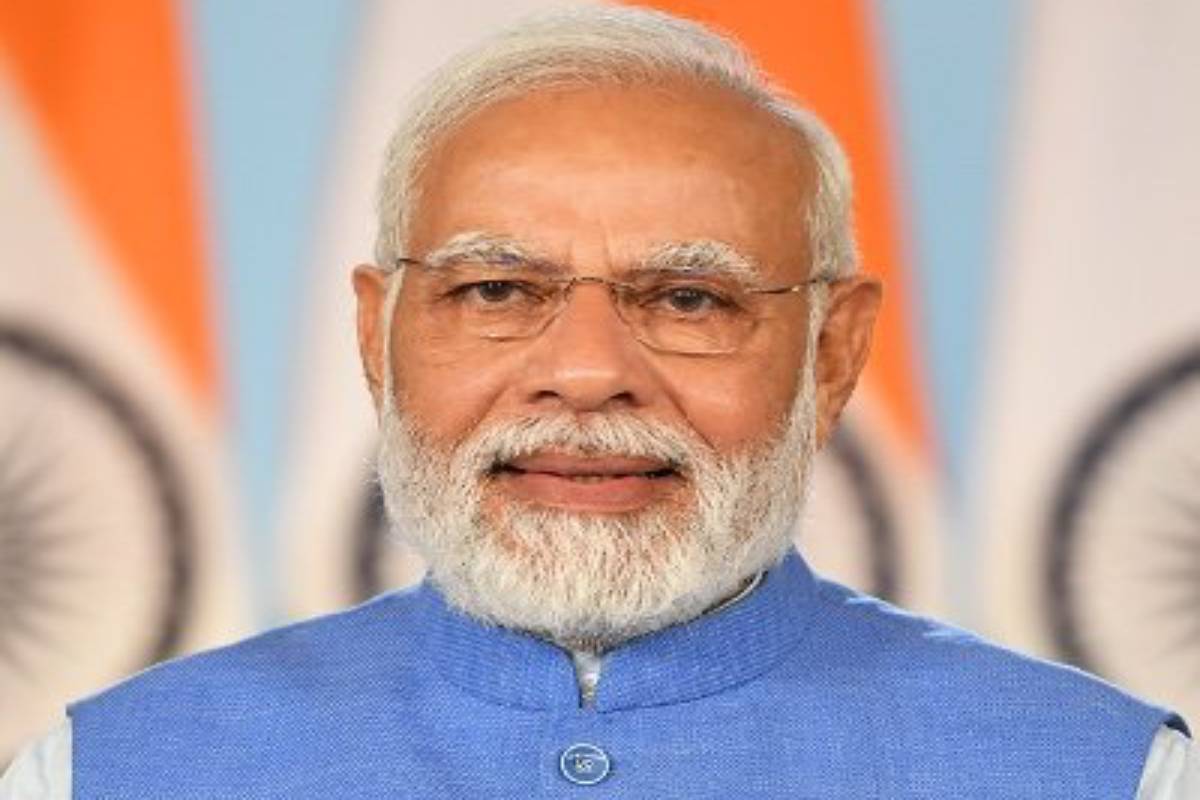Union Cabinet approves India-UAE pact on economic corridor
The aim of the IGFA is to enhance the bilateral relations and to further strengthen the relations between the two countries in the ports, maritime and logistics sectors.
This is a time for new responsibilities, new possibilities and bold decisions for every stakeholder to make India a developed nation by 2047, said Modi.

[Photo: Twitter/@narendramodi]
Prime Minister Narendra Modi on Saturday said the Union Budget 2023-24 had provided new energy to infrastructure development and this was a time for new responsibilities, new possibilities and bold decisions for every stakeholder to make India a developed nation by 2047.
He was addressing a Post-Budget webinar on ‘Infrastructure and Investment: Improving logistic efficiency with PM GatiShakti National Master Plan’. It was the eighth of a series of 12 post-Budget webinars organized by the government to seek ideas and suggestions for effectively implementing initiatives announced in the Union Budget.
The prime minister said the Budget had provided capital expenditure (Capex) five times compared to 2013-14 and the Government was moving towards a target of investing Rs 110 lakh crore under the National Infrastructure Pipeline. The Prime Minister noted the praise for the Budget and its strategic decisions by experts and major media houses.
Advertisement
“Infrastructure development is the driving force of a country’s economy,” the Prime Minister said as he pointed out that India will achieve the target of becoming a developed nation by 2047 by following this very path.
“Now, we have to improve our speed and move in top gear,” he said. Noting that PM GatiShakti Master Plan is a critical tool that integrates economic and infrastructural planning with development, the prime minister said the plan is going to change the face of India’s infrastructure and its multimodal logistics.
He noted that the results of the PM GatiShakti Master Plan were becoming visible. “We have identified the gaps that were impacting the logistics efficiency. That is why, in this year’s Budget, 100 critical projects have been prioritized and Rs 75,000 crore have been allocated.”
“With quality and multimodal infrastructure, our logistic cost is going to reduce further in the days to come. This will have a positive impact on the goods made in India, on the competence of our products. Along with the logistics sector, there will be a lot of improvement in ease of living and ease of doing business,” he added, inviting the participation of the private sector in the sector.
Infrastructure development was always part of India’s development story, he said. Those with knowledge of history knew about the construction of Uttarapath by Chandragupta Maurya, which was carried forward by Emperor Ashoka and later upgraded by Sher Shah Suri, he said. The Britishers turned it into the G T Road. The importance of highways was acknowledged for centuries in India, the Prime Minister said.
Referring to riverfronts and waterways, Mr Modi referred to Ghats of Banaras which were directly connected to Kolkata via waterways. He said the 2000-year-old Kallanai dam of Tamil Nadu was still operational.
Infrastructure development under previous governments suffered as the prevailing mentality then was that poverty is a virtue, the prime minister said. Elaborating on the improvements in the situation, he said that the average construction of National Highways has been nearly doubled compared to what it was before 2014.
Similarly, only 600 route km of railway track was electrified per year before 2014 which is now reaching 4000 km per year. He further added that the number of airports and seaport capacity has doubled as well. “Now we have to improve our speed and move in top gear,” he said.
Elaborating on the role of states, the prime minister informed that the 2023-24 Budget has extended by one year the 50-year interest-free loans for capital expenditure, and Budget expenditure for the scheme has been increased by 30 per cent.
The Prime Minister asked the participants to find ways to develop a mechanism for an advanced forecast of needs of their sectors as various materials are needed for infrastructure development. “We need an integrated approach so that the roadmap for the future remains clear. PM GatiShakti National Master Plan has a big role in this,” he said emphasizing the need to integrate the concept of circular economy with the sector.
He highlighted that infrastructural development is not limited to rail, road, ports, and airports anymore but as part of this year’s Budget, the Prime Minister said that huge projects have been taken up for storing the produce of the farmers in villages.
He also gave examples of wellness centers being developed in the cities and villages, new railway stations, and pucca houses being delivered to every family.
The prime minister recalled his experience after the earthquake in Kutch and explained how an entirely new approach to developing Kutch was adopted after the rescue work. He said that infrastructure-led development of the region, instead of politically expedient quick fixes, turned it into a vibrant hub of economic activity.
The prime minister emphasised that the robustness of India’s physical infrastructure is equally important for the strengthening of the country’s social infrastructure. He underlined that a strong social infrastructure will lead to more talented and skilled youth who will come forward to serve the nation. He stressed the need for skill development, project management, financial skills and entrepreneurship to accomplish this goal.
Advertisement